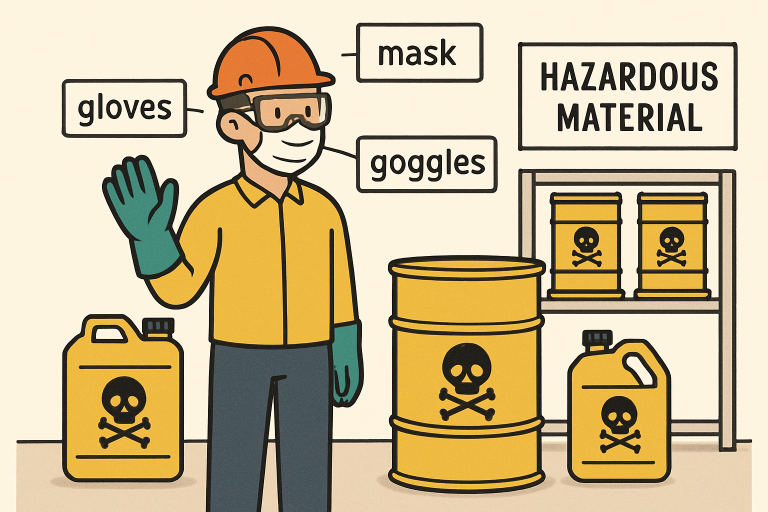
Introduction
Handling hazardous materials is a high-stakes responsibility that demands unwavering attention to safety protocols. From industrial plants to healthcare facilities, the risks involved in working with toxic, flammable, or infectious substances can be severe if best practices are not rigorously followed. Whether maintaining compliance or protecting workers, proactive approaches safeguard lives and property. For specialized scenarios such as cleanup after hazardous incidents, professionals equipped for biohazard cleanup can make all the difference, minimizing danger and ensuring thorough decontamination.
Organizations that prioritize knowledge, equipment, and communication are better prepared for daily operations and unexpected crises. Fostering a culture of vigilance where each employee understands—and anticipates—risks leads to fewer accidents and a healthier workplace overall. Simple lapses, such as improper labeling or missed training, can have consequences that extend beyond immediate harm, impacting compliance, reputation, and operational continuity.
Proper hazardous materials handling isn’t just about following rules—it’s about building a resilient organization. The practical strategies discussed here help large and small firms reduce their risk profiles, protect their teams, and promote a safe environment. Regulations and technology evolve, so continual training and updated emergency plans are cornerstones of responsible operations.
For sensitive and low-frequency situations like unattended deaths, specialized services such as death cleanup in the Seattle area handle both emotional and technical aspects of restoration, reducing distress and liability for property owners.
Understanding Hazardous Materials
Knowledge is the cornerstone of hazardous materials safety. Employees must be familiar with the basic properties of the chemicals or substances they encounter. Reviewing Safety Data Sheets (SDS) is the first line of defense, revealing crucial data about toxicity, flammability, reactivity, and environmental impact. This understanding enables informed decisions about handling, storage, and emergency procedures and helps organizations comply with Occupational Safety and Health Administration (OSHA) regulations and industry standards. More resources on this topic can be found through authoritative pages on OSHA’s hazardous materials safety guidelines.
Personal Protective Equipment (PPE)
PPE acts as an essential shield whenever hazardous materials are present. Employers must assess the types of hazards workers may face—chemical splashes, inhalation risks, or sharp objects—and provide corresponding PPE such as gloves, respirators, goggles, and body protection. Maintenance and regular inspection of PPE are crucial; equipment should fit properly and be suited to the task. When in doubt, a hazard assessment conducted by safety professionals can clarify appropriate protection measures. Industry leaders such as the CDC provide detailed guidance on how to select, use, and maintain PPE.
Hazard Communication Programs
Transparent communication is fundamental. A robust Hazard Communication (HazCom) program guarantees all employees can identify hazardous materials and comprehend the risks. This starts by ensuring clear, compliant labeling on all containers and readily available SDS documentation. HazCom also involves detailed staff training on handling procedures, exposure symptoms, and preventive actions. Updates are necessary as new materials or regulations arise, ensuring alignment with legal requirements and best practices.
Proper Storage and Labeling
Properly storing and labeling hazardous substances prevents workplace incidents and is mandated by law. Storage areas must be specifically designed, often with segregating barriers, temperature controls, ventilation, and containment systems. Containers should display visible labels detailing substance identity, hazards, and handling instructions according to the Globally Harmonized System (GHS) of Classification and Labeling of Chemicals. Adhering to standardized labeling and storage prevents dangerous mixing, accidental exposure, and environmental contamination.
Emergency Response Procedures
No workplace can eliminate all risk, making comprehensive emergency procedures vital. Regularly rehearsed drills, clear evacuation plans, and easily accessible spill containment kits can significantly mitigate harm during incidents. Employees must be trained in first aid, know the locations of eyewash stations, and understand their roles during an emergency. Partnering with local emergency services and updating preparedness plans helps ensure a rapid, coordinated response.
Training and Education
Effective training underpins every successful hazardous material management system. New staff should complete rigorous onboarding and periodic refresher courses incorporating the latest regulations and workplace changes. Methods such as interactive simulations, hands-on practice, and scenario-based learning dramatically improve knowledge retention and confidence. Training is not a one-off: continuous education keeps your workforce alert, engaged, and capable of responding to evolving risks.
Regular Audits and Inspections
Routine inspections expose lapses before they can escalate. Regular audits of storage conditions, PPE availability, labeling accuracy, and the effectiveness of emergency equipment provide a realistic snapshot of operational safety. Addressing issues swiftly after each audit demonstrates a credible commitment to safety—and can also reduce regulatory liabilities if an incident should occur. Past cases have shown that well-documented inspections are invaluable for preventing accidents and defending organizational policies when reviewed by regulators.
Fostering a Safety-First Culture
Cultivating a workplace where safety is non-negotiable has lasting benefits. Leadership should actively promote best practices, reward vigilant employees, and maintain transparent lines of communication regarding hazards and near-miss incidents. Involvement from all levels of staff builds accountability and fosters innovation—encouraging the adoption of new safety technologies and methods. Organizations with strong safety cultures routinely outperform their peers in productivity, morale, and regulatory compliance.
Mastering hazardous materials handling is an ongoing process. Companies create environments that protect their people and the public by combining knowledge, preparation, training, and vigilant oversight. Adapting proactively to industry developments and fostering a culture grounded in safety ensures long-term, sustainable success.